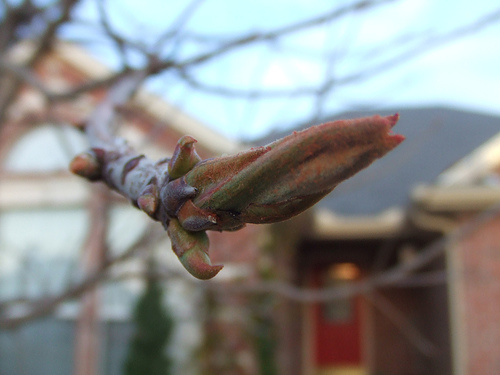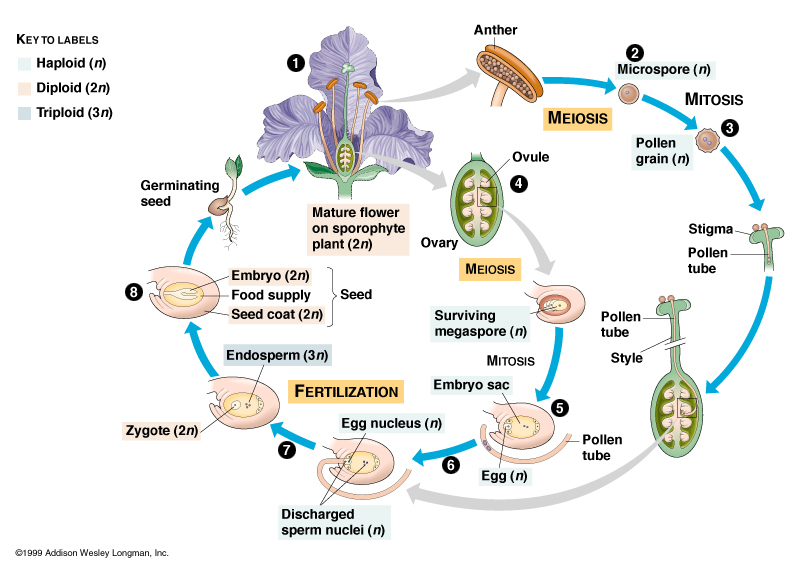The Private Life
Like all other angiosperms, Pistacia vera undergos reproduction via alternation of generations. However, pistachio reproduction differs from other angiosperm reproduction because the pistachio is wind pollinated, not insect pollinated.
Typical angiosperm reproduction- the female flower (megagametohyte) is pollinated and fertilized by the male flower (microgametophyte).
Pistachio reproduction is a
challenge. The trees are dioecious so one male and one female
tree is needed to make a new tree, but this is not an easy task. The
male trees tend to be taller and they produce small brown-green
flowers with no pedals. The female trees are shorter and they
produce a red tinge on the flower when the flower is receptive. The
female plants are only receptive for about four days. This is a huge downfall because male and female trees
flower at different times during the season.
different times during the season.
If this was not a big enough challenge already, the pollen of the male is dispersed to the female via the wind. In order to have a successful pollination there are usually eight female trees found for every male. This way the flowering of the females is staggered and hopefully when the females finally flower one of eight trees will be pollinated by the male. Since the apical flowers are the first to open, they are also the first to be pollinated. Once pollinated, these flowers send a signal to other flowers further down the steam to inhibit fruit growth. As a result the female trees only produce fruit near the steam.
Pistachio tree bud
See the authors relationship with the pistachio

